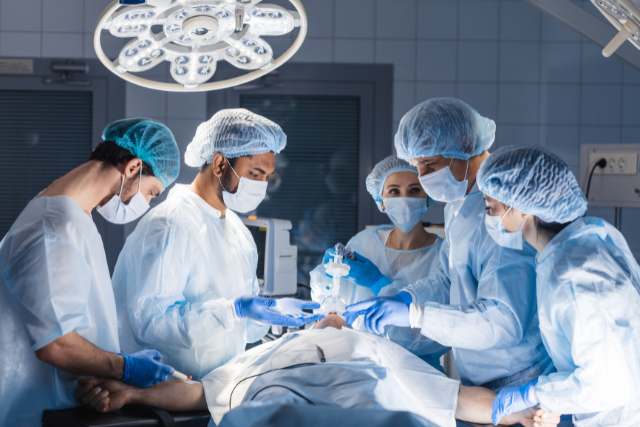Pilonidal cysts are a common but often misunderstood condition that can cause significant discomfort and sometimes lead to more severe health problems if left untreated. Understanding the symptoms of pilonidal cysts is crucial for early identification and appropriate management.
In this blog, we will dive into what a pilonidal cyst is, the symptoms to watch for, and how it is typically treated. Whether you’ve been diagnosed with a pilonidal cyst or are concerned about the possibility of one, this guide will provide you with the information you need.
What is a Pilonidal Cyst?
Before we look into the symptoms of pilonidal cysts, it’s important to understand what they are. A pilonidal cyst is a small sac-like pocket that forms under the skin, usually at the top of the buttocks near the tailbone. These cysts often contain hair, dead skin cells, and other debris. Over time, they can become infected, leading to swelling, pain, and drainage.
The name “pilonidal” comes from the Latin words “pilus” meaning hair and “nidus” meaning nest, reflecting the cyst’s typical content. While the exact cause of pilonidal cysts is still debated, they are more common in people who have excess body hair, sweat excessively, or sit for long periods.
Symptoms of Pilonidal Cyst: What to Watch For
While not everyone with a pilonidal cyst will experience symptoms, it is important to be aware of the signs that may indicate a cyst is forming or becoming infected. Here are the most common symptoms of pilonidal cysts:
1. Pain and Discomfort
The most common symptom of a pilonidal cyst is pain. This pain is usually located at the base of the spine, near the tailbone. It may start as mild discomfort but can worsen if the cyst becomes infected. Sitting for long periods, or any pressure on the affected area, can increase the pain.
- Initial Pain: Early on, the pain may feel like a slight ache or tenderness in the area.
- Increased Pain with Infection: If the cyst becomes infected, the pain may intensify and feel sharp or throbbing.
2. Swelling or Redness
As the cyst becomes more irritated or infected, you may notice swelling and redness around the site. The area may appear inflamed and can feel warm to the touch.
- Visible Swelling: Swelling can range from mild to severe, depending on the size of the cyst and whether it’s infected.
- Increased Redness: When an infection occurs, the area around the cyst will often appear redder than normal, signaling inflammation.
3. Drainage and Pus
One of the more noticeable symptoms of an infected pilonidal cyst is drainage. As the cyst becomes infected, it can form an abscess, and pus or other fluids may drain from the cyst. This drainage may be clear, yellowish, or have a foul odor.
- Clear or Yellow Fluid: In early stages, you may notice clear or yellowish fluid draining from the cyst.
- Pus or Blood: If the infection worsens, the fluid may turn to pus or blood, indicating a more severe infection.
4. Foul Odor
When a pilonidal cyst becomes infected, it can emit a strong, unpleasant odor. This is due to the bacteria inside the cyst, which can cause an infection to develop.
5. Fever and Malaise
In some cases, the infection may spread or become more severe, causing fever and general feelings of illness. This is often a sign that the infection is more serious and requires medical attention.
- Fever: A fever may indicate that the infection has become systemic, affecting the body.
- Feeling Unwell: You may feel fatigued or have a general sense of unwellness as your body tries to fight off the infection.
6. Recurrent Infections
Pilonidal cysts can be prone to recurring infections. After an initial infection is treated, the cyst may come back, causing repeated symptoms. This can be frustrating for patients, but understanding the nature of the condition can help manage expectations.
- Chronic Issues: Many individuals experience multiple flare-ups over time, especially if they don’t properly treat or manage the cyst.
- Flare-ups: These recurrent infections may, in some cases, involve symptoms similar to the original cyst, including pain, swelling, and drainage.
7. Hair in the Cyst
In many cases, pilonidal cysts contain hair, dead skin cells, or debris. If you notice hair protruding from the cyst, it may be an indication that the cyst is active. The presence of hair can also contribute to further irritation and infection.
When to Seek Medical Help
If you notice any of the above symptoms, particularly pain, swelling, or drainage, it’s essential to seek medical attention. While some pilonidal cysts may resolve on their own, infections can worsen over time if left untreated.
Seek Immediate Help If:
- You have a fever or feel unwell.
- The cyst becomes increasingly painful or swollen.
- There is significant drainage of pus or blood.
- The cyst shows no signs of improvement after self-care.
A healthcare professional can assess the cyst and determine the best course of treatment, which may include antibiotics for an infection or surgery to remove the cyst.
Diagnosis of Pilonidal Cyst
When you visit a doctor for a suspected pilonidal cyst, they will typically perform a physical exam. The doctor will examine the area around your tailbone, checking for visible signs of swelling, redness, and drainage. In some cases, the doctor may order imaging tests, such as an ultrasound or MRI, to assess the cyst’s extent and determine if it is infected or has formed an abscess.
Treatment Options for Pilonidal Cysts
The treatment for a pilonidal cyst depends on the severity of the condition. In mild cases, simple self-care measures like warm compresses and antibiotics may be sufficient. However, more severe cases may require surgical intervention.
1. Drainage of the Cyst
If the cyst becomes infected and forms an abscess, your doctor may need to drain it. This procedure involves making a small incision to allow the pus to escape, which can relieve pressure and pain.
2. Antibiotics
If the cyst is infected, your doctor may prescribe antibiotics to treat the infection. These medications help reduce the swelling and prevent the infection from spreading.
3. Surgical Removal
In cases of recurrent or large pilonidal cysts, surgery may be recommended to remove the cyst entirely. The procedure involves excising the cyst and surrounding tissue to prevent it from coming back.
Excision Surgery: This is a more invasive approach, where the cyst and a portion of surrounding tissue are removed.
4. Post-Surgical Care
After surgery, proper wound care is essential for preventing infection and ensuring proper healing. You may need to follow specific instructions about cleaning the area, avoiding certain activities, and taking prescribed medications, in order to ensure proper healing.
5. Laser Surgery (SiLaC)
Some doctors may recommend SiLaC (Surgical Laser Treatment for Pilonidal Cysts), a newer and less invasive approach. SiLaC uses a laser to remove the cyst and close the wound, minimizing tissue damage and leading to a quicker recovery time compared to traditional surgery. This method is often preferred for its reduced risk of recurrence and faster healing.
Preventing Pilonidal Cysts
Although you cannot prevent all pilonidal cysts, you can take steps to reduce your risk of developing one. These include:
- Maintaining Good Hygiene: Keep the area around the tailbone clean and dry. Regularly washing and drying the skin can help reduce the risk of infection.
- Avoid Prolonged Sitting: Long periods of sitting can put pressure on the area around the tailbone, potentially contributing to the development of a cyst.
- Hair Removal: Shaving or using hair removal methods on the area can reduce the risk of hair trapping in the cyst.
Conclusion: Symptoms of Pilonidal Cyst and When to Seek Help
The symptoms of pilonidal cysts are often easy to spot once you know what to look for. Pain, swelling, drainage, and redness around the tailbone are common signs that a cyst may be present. If you experience any of these symptoms, especially if the cyst becomes infected, seeking prompt medical attention is essential to prevent complications.
Whether you’re dealing with a minor irritation or a recurrent cyst, understanding the symptoms of pilonidal cysts and knowing when to seek medical help can make a big difference in your health and comfort.
If you suspect you have a pilonidal cyst or are experiencing symptoms, contact your healthcare provider for a diagnosis and appropriate treatment plan.










